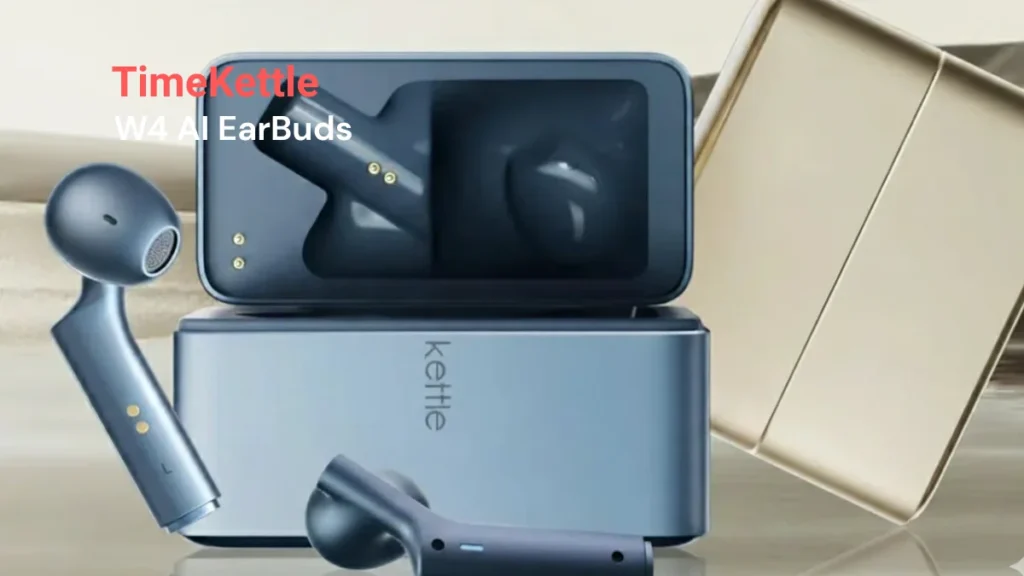Translation earbuds just got an upgrade.
Timekettle’s new W4 interpreter earbuds use bone conduction to cancel background noise—making real-time multilingual conversations clearer, even in airports or packed conference halls.
Key Takeaways
- W4 earbuds use bone conduction for noise-free voice capture.
- Translate 42 languages and 95 accents with 0.2-second delay.
- Modes for one-on-one or group translation via companion app.
- Offline packs, meeting transcripts, and summaries included.
- Priced at $350, cheaper than W4 Pro’s $450 tag.
Timekettle’s W4 interpreter earbuds use bone conduction to isolate your voice for more accurate translations, even in noisy environments. Supporting 42 languages and 95 accents with just 0.2 seconds of delay, the $350 earbuds aim to make business travel, global networking, and everyday conversations smoother across language barriers.
A new twist on translation earbuds
Timekettle, a Chinese gadget maker best known for its AI translation devices, has unveiled its newest product: the W4 interpreter earbuds. Unlike traditional wireless buds, these use bone conduction to pick up speech via facial vibrations—cutting through chaotic background noise.
The result? Clearer, faster translations even in places like airports, convention centers, or busy cafés.
How the W4 works in real life
The earbuds pair with Timekettle’s Babel OS, which translates between 42 languages and 95 accents. The company claims lag is just 0.2 seconds, nearly real time. Unlike earlier models, the software now leans on large language models (LLMs) to grasp conversational context and sort out confusing homophones (think “right” vs. “write”).
Two main modes make the earbuds flexible:
- One-on-One mode: share a bud each with another speaker.
- Listen and Play mode: wear both buds while your phone translates group speech back into your ears.
For professionals, the app also saves transcripts and generates meeting summaries—a useful add-on for business travelers.
Why bone conduction matters
Bone conduction isn’t new tech—military headsets and some fitness headphones already use it. But applying it to translation earbuds changes the game. Instead of struggling to separate your voice from clinking glasses or overhead chatter, the W4 isolates your speech at the source—your skull.
That’s especially important in professional scenarios where mistranslation could derail a negotiation.
Design and battery life
The earbuds come in a rectangular case weighing 116.5 g. A one-hour charge delivers three hours of translation, while the case recharges in 1.5 hours and powers the buds up to four times.
The open-tip design is closer to Apple’s AirPods 4 than the snug Pro line. Timekettle includes silicone grips and hooks to help them fit different ear shapes.
W4 vs. W4 Pro
Timekettle already sells the W4 Pro, priced at $450. The Pro model ditches bone conduction, opts for open-ear hooks, and supports extras like video call translation.
The standard W4 undercuts it at $350, making it the cheaper—but still ambitious—choice for travelers, international students, and multilingual professionals.
The bigger picture: Translation in the AI era
The W4 launch reflects a bigger trend: AI-powered translation is moving from apps into hardware. By embedding LLM-driven software into wearables, companies like Timekettle are betting on frictionless communication as a premium product.
If successful, this could normalize cross-language interactions in business, education, and tourism—shrinking one of the world’s oldest barriers.
Everyday consequences
For frequent flyers, these earbuds mean skipping clunky app-based translations at customs or meetings. For students abroad, it’s about clearer communication with peers and professors. And for casual travelers, it’s simply about enjoying a restaurant or museum tour without missing context.
Conclusion
At $350, the Timekettle W4 interpreter earbuds sit in a sweet spot: not cheap, but affordable compared to pro-tier devices. With bone conduction tech and AI-driven translation, they could be a game-changer for anyone navigating multilingual spaces daily.
